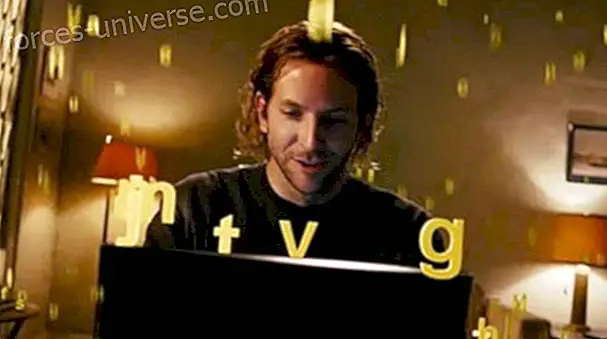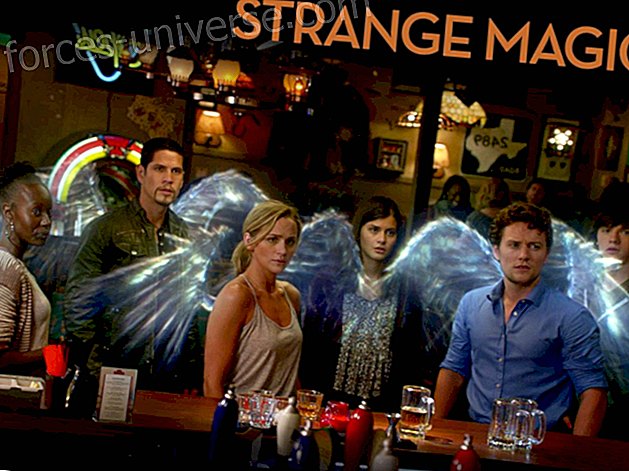CREATION COURSE Unit 4: Construction Learning Object 1: Esoteric training.
The study of esotericism, when accompanied by an esoteric living, reveals, over time, the world of meanings and eventually leads to the world of meaning. The esoteric begins to try to discover the WHY of things, is determined to solve the problem of events, crises and circumstances, to get to decipher the meaning they may have for him. Having understood the meaning of a particular problem, the resulting experience prompts you to penetrate deeper into the significant world that has been revealed to you. Then he learns to immerse his small personal problems in the most vast problem of the All, thus losing sight of his little self and discovering the greater self. The true esoteric point of view is always that of the Greater All.
The esoteric discovers that the world of meanings extends as an intricate network over all activity and aspect of the phenomenal world. The vital plot is the symbol and design of this network, while the vital plot located between each of the centers along the spinal cord of the individual constitutes the microcosmic analogy; they are like small entrance doors to a wider world of meanings. This really concerns the true Science of the Centers. Once developed and in full operation, they are methods to consciously enter a world of subjective realities and introduce us into previously unknown levels of divine consciousness.
Esotericism, in truth, is the training of the faculty to act freely in the world of meanings; esotericism does NOT deal with any mechanical aspect; it deals totally with the soul aspect, the Savior, Redeemer and Interpreter aspect, and the mediating principle between life and substance, which constitutes the soul of the aspirant or the individual disciple. Esotericism is the Science of Redemption of which the Saviors of the World are the eternal symbols and representatives.
OBJECTIVES:
- Establish differences between the psychological method and the esoteric method.
- Establish differences between exoteric knowledge and esoteric knowledge.
- Justify the importance of the concrete mind in the construction of the bridge of light.
TEXT ONE
The word arose for all the sons of men, the Sons of God: Those who have reached the portal of the last WAY must undergo the test; and in doing so they teach and elevate those who want to follow in their footsteps.
INTRODUCTORY ACTIVITY: medicine and psychology.

Carl Jung is a 29-year-old psychiatrist, who is starting his professional career and lives in Burghelzli hospital with his pregnant wife. Jung rehearses the experimental treatment invented by Sigmund Freud, psychoanalysis or curation by the word, as was also known then, with Sabina Spielrein, a patient of 18 years. Sabina is a young Russian woman of Jewish origin, very cultured, who speaks German to perfection, with a diagnosis of hysteria that can lead to violence. In his conversations with Jung, Sabina reveals having had a childhood full of humiliation and beatings inflicted on him by an authoritarian father. Psychoanalysis does not take long to bring to light a disturbing sexual element in its dysfunction, supporting Freud's theory that relates sexuality to emotional disorders. A dangerous method It is a historical psychological drama, co-production German-Canadian, of 2011 starring Viggo Mortensen, Michael Fassbender.
Nathan is a young Mexican scientist very gifted in his specialty, Cellular Biology. He is a man locked in himself, good, lonely and helpful, who secretly lives a passionate love for Maya, one of his work colleagues. Meet Jacques, a man with supernatural abilities, who opens his heart to a meeting with himself. of seemingly inexplicable healing. Nathan performs a series of incredible experiments with his new friend to study the extraordinary abilities of Jacques's brain, which confronts his scientific mind. An unknown energy makes contact with him, thus discovering the Emotional Genome and a new human sense, the "Sixth Sense", the sense of the Invisible, something that comes to revolutionize science. Nathan faces one of the greatest mysteries of all time, the awakening of a new intelligence and highlights a new path of exploration for science, based on the "emotion of love." HIM: Beyond the light is a Mexican-French film about the power of the human being's mind to do things that are beyond the light.
- After watching the movies A dangerous method and Beyond the light, answer the following questions: What is the relationship between signs, symptoms and meanings? Why is psychoanalysis a dangerous method? What is the human intelligence matrix (HIM)? What is the relationship between mind and love?
ACTIVITY ONE: the psyche

The vital body assimilates prana and uses it through the cardiovascular system (vital force) and the nervous system. The psychic is conditioned by the biological-chemical-physical and its objective manifestations are vitality, magnetism and activity. These manifestations of the psychic nature when assumed from the quality are known as will, wisdom and activity.
The Human Nervous System has three subdivisions: the brain, a sensitive system and a vegetative (sympathetic) one. The soul located in the spinal cord and in the sympathetic system remains unconscious for most human beings. The body revolts when the rational man who presides over the destiny of his life, pretending to be superior, ignores spinal psychism and sympathetic psychism, forgetting that consciousness is nothing more than the vanguard of the psychic being.
One of the methods used, when experimenting with the psychic, was the association of words, those inductive words that determine any disturbance of the reaction are those that find in the subject an emotional content, that is, they wake up an echo in the part from the unconscious soul, thus emerged the concepts of lapsus lenguae and callami, indications of our secret reactions.
At first he associated psychology with black magic, trying to exorcise all the evils that come out of Pandora's Box, but over time he was associated more with white magic, when he showed that we can give light to the shadow . What is your magic wand? What can the magic of consciousness consist of? How can this make spells? Consciousness can imagine! The attribution of insignificance is its magic wand, the dangerous and divine property of consciousness, a creative property that can at will abstract one world and postulate another. The cognitive revolution in psychology allowed us to examine how thought and experience were organized in their thousands of forms and language is presented as a way of ordering our thoughts on things. But can psychological processes such as perception, memory, thought and inference explain constructed realities?
Psychology and philosophy were found in the "methodology": as the merchant and his accountant, the second one told the first one what was the correct way to talk about the symbols he had produced. The methods became a concern: methods to convert the subjective into objective, the hidden undercover, the abstract into concrete. The psychological method takes into account the limitations of our mind as a cognitive apparatus, tries to keep the mind in the fields of its own reach and consider all the conclusions and discoveries in relation to the state or class of mind. The psychological method leads us to the esoteric method, which is actually an augmented psychological method: from meanings to values.
What differences do you find between the psychological and the esoteric?
ACTIVITY TWO: the sciences

Science is a process of inquiry; that is, a procedure to answer questions, solve problems and develop more effective procedures to answer questions and solve problems.
Objectivity is a scientific ideal that all researchers strive to achieve. Objectivity consists in making full value judgments; The wider the values, the more objective the results. Objectivity is the social product of the open interaction of a wide variety of subjective value judgments. Objectivity is a systemic property of science considered as a whole, not a property of individual researchers or research.
By the mid-1970s the social sciences had moved away from their traditional positivist stance, approaching a more interpretive stance: meaning became the central element. The human sciences, meanwhile, set out to clarify the ultimate reasons for human behavior. Modernity meant building an autonomous and responsible subjectivity, which would take destiny into their hands. Modernization sought to transform reality by retaking technological advances, above all, without affecting the subjectivity of people. The defining features of modern society - self-awareness, autonomy and self-realization - are constructed in the interrelation with the other subjects: in intersubjectivity.
The distinction between pure science and applied science plays a central role in most contemporary dissertations about science, one way to differentiate them is to try to make the distinction between "answering a question" and "solving a problem, " thus the difference between science and technology. Cognitive science emerges as a result of transdisciplinary scientific research between sciences and technologies.
The difference between science and technology brings us a little closer to the concepts of exoteric knowledge and esoteric knowledge, but while technology has made the underlying dynamisms tangible, the esoteric remains intangible, the esoteric is related to qualities and values. When we approach the study and examination of the universe from the outside, we give rise to several physical sciences; when we face the investigation of the self and the universe from within, we give rise to theology and metaphysics. The art of the most recent philosophy has made an effort to harmonize the many discrepancies of science and religion.
For a defense lawyer, saving someone is naturally making him escape the accusation made against him. The soul is saved when it is conveniently armed, when it is equipped so that it can defend itself if necessary. Who is saved is one who is in a state of alertness, in a state of resistance, in a state of dominion and sovereignty of yes that allows him to reject all attacks and all assaults. Therefore, the esoteric in training:
- He has to realize the nature of the forces that constitute his personal faculties and that he himself, magnetically, has brought the expression in third dimension.
- He must become sensitive of the soul's driving energies that come from the higher levels of the mental plane.
- You must recognize the energies that condition your environment, considering them as active energy.
Three main sciences will have to dominate the esotericist in the field of education and in the New Age, which will not deny the activities of modern science, but will integrate them into a vast subjective set. Those main sciences are:
1.- Cognitive Science : It is the new and true science of the Mind, which will use the mental substance for the construction of the Bridges between the Personality and the Soul and later between the Soul and the Spiritual Triad
2.- The Science of Metacognition : It is a subsidiary branch of cognitive science. By its mediation the process of the construction of the Bridge is facilitated from the beginning. It is one of the main ways to act spiritually - one of the paths to God - and one of the primary construction techniques that will predominate in the new educational methods, from there What is being talked about so much about constructivism.
3.- The Science of Service: Normally and naturally it is the result of success in the application of the other two Sciences. As the union between the Soul and the Personality continues to be established, and the knowledge of the Plan and the Light of the Soul flows to the brain Consciousness, the normal subordination is realized from the inferior to the superior.
What is the method of human sciences? How to assume history and culture from development? What is the importance of semiotics for the understanding of culture? How is intersubjectivity achieved?
ACTIVITY THREE: the concrete mind.

The word "mind" was a bad word, prohibited in the predominant psychology, which was mentioned only in quotation marks, indicated by the tone of the voice in the symposia or with the corresponding graphic signs in the writings. Vygostky had already raised in 1934 the idea of higher psychological processes, that is, those that are performed in the cerebral cortex. The idea of "The Second Signal System": (this is not an SOS but an SSS, which in Colombia is the Social Security System) the world processed by language, compared to the world processed by the senses, was ambiguous but interesting . The main premise of Vygostky's formulation was that man was subject to the dialectical game between nature and history, between his qualities as a creature of biology and as a product of human culture. In the second system, the world is codified by language, representing nature transformed by history and culture.
Observation and communication technologies formed the two ends of a technological arc, which began to gain weight when its cornerstone came into action: the computer. Cybernetics emerges as a science towards 1942 whose object of study was control and communication in the animal and in the machine to develop a language and techniques that would allow us to address the problem of control and communication in general. Pedagogy and cybernetics could not fail to meet, because pedagogy is an action of man over man and cybernetics the art of ensuring effectiveness in action. The beginnings of cyber pedagogy can be located in 1954 when behavioral psychology adapted human learning to animal conditioning.
At the end of the 1950s, what is now called the cognitive revolution took place. Psychologists like Herbert Simon and George Miller and linguists like Noam Chomsky were not devoted to the objective and open responses of their subjects, but to what they knew, how they acquired knowledge and how they used it. The execution (doing) was ceased to be insisted, and competition (knowledge) was underlined, and this inevitably led to the inquiry into how knowledge was represented in the mind. Could knowledge of the mind be stimulated with a computer program (as Simon was trying to do) or with a theory of mental organization (as Piaget was doing)? The "mind" was reintroduced into psychology, defined in various ways, such as the modalities in which thought is organized, or as a set of strategies for ordering knowledge in order to achieve the proposed results.
The nature of thought is the logical manipulation of symbols, so it is often referred to as a thinking machine. Automation is related to the replacement of the mind. Intelligence appeared as acuity to use culturally transmitted knowledge and procedures as prostheses of the mind. Intelligence is the emergence of the subject's strategic thinking towards the environment, when solving problems in situations of complexity. Thus the so-called intellectual competences were consolidated: creativity, problem solving and decision making. While the objectives define the purpose of problem solving, the strategy determines the means used for the solution.
- Establish relationships between the concepts of the words given, seen from personal exchange and commercial exchange: transaction, negotiation, interest, effectiveness, actions.
REFERENCES.
- D. Ouspensky. A new model of the universe . Buenos Aires: Editorial Kier. 1977






